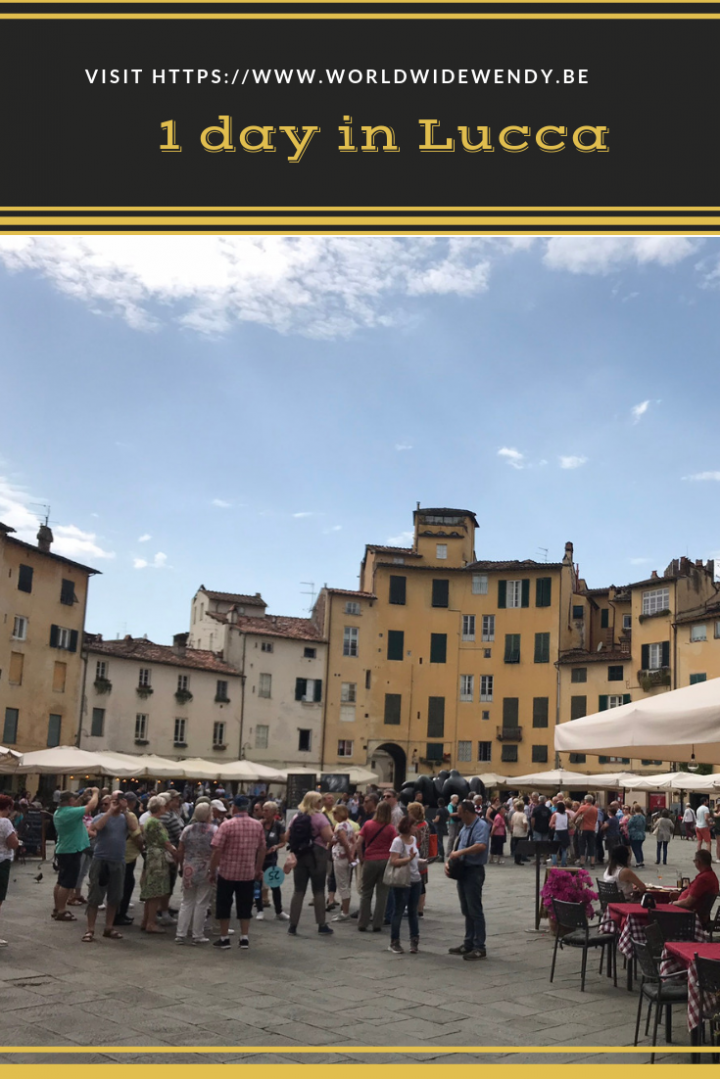Lucca is a city in Tuscany, about an hour’s drive from Firenze/Florence. It is also the capital of the Province of Lucca. The town has about 90,000 inhabitants and is one of the richest cities of North Italy. Because of its central location at 25km from Pisa and 80km from Florence, it is easy to get to as a day trip from Florence. When my husband and myself did a road trip around the sights of Tuscany, we stopped off in Lucca.
After a city walk and a romantic dinner on a sunny terrace, we arrived at the charming Piazza dell’Anfiteatro, the central market square. And it is there that we decided we would call our first son Lucca. So today there’s a teenager who listens (or perhaps doesn’t listen) to the name Lucca. There are so many amazing towns in Italy, but Lucca will forever be our favourite.

The city is centuries-old and is already mentioned in 218 B.C. It was founded by the Etruscans or the Ligurians. It has an infamous history and flourished during the classic antiquity. Caesar once had important meetings here, Dante lived here in exile and because of a thriving silk trade, this town could rival Byzantium. Napoleon put his sister on the throne here in 1804, which made Lucca into a principality until 1814.
Sights in Lucca
Walk or cycle the city walls
As soon as you arrive you see the city walls. Lucca was completely walled from 180 B.C., but the current walls date back to the 15th and 16th centuries. They were built to protect the city against attacks from Florence. They however never saw service in that respect as there were hardly any military skirmishes since that time. But they proved to be useful.
The river Serchio flooded in 1812, and the gates were ordered shut to keep the water out. Napoleon’s sister was out of town however, and could not get in on her return. The story goes that they had to hoist her over the wall.
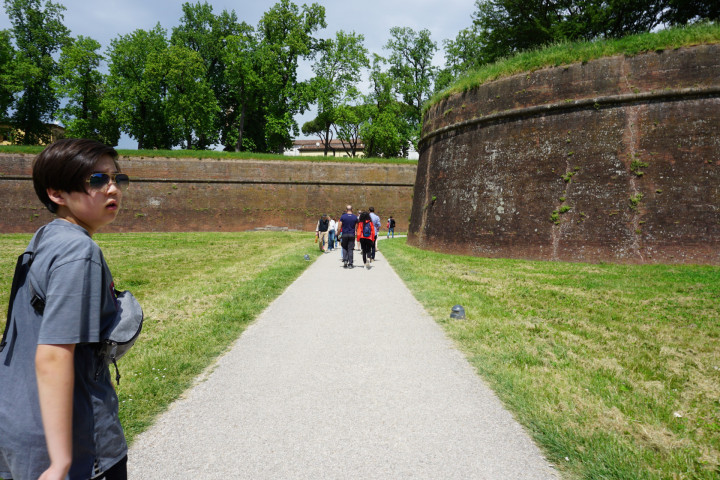
The wall is about 4km long, 30m wide and 12 meters high. A park was created on the top, which makes this the perfect spot for a walk or cycle tour.
De towers of Lucca
Lucca once had 130 towers. Some of the 13th century towers are well-preserved:
Torre dell’Orologio
This 50-metre high tower is the highest in Lucca. In the 14th century, the city decided to adorn the tower with “a reliable clock that befits the town and clearly shows the hours” (orologio bonum, sufficienter aptum et bene distinguentes tempus per horas). In 1754, the old clock was replaced with the current one.
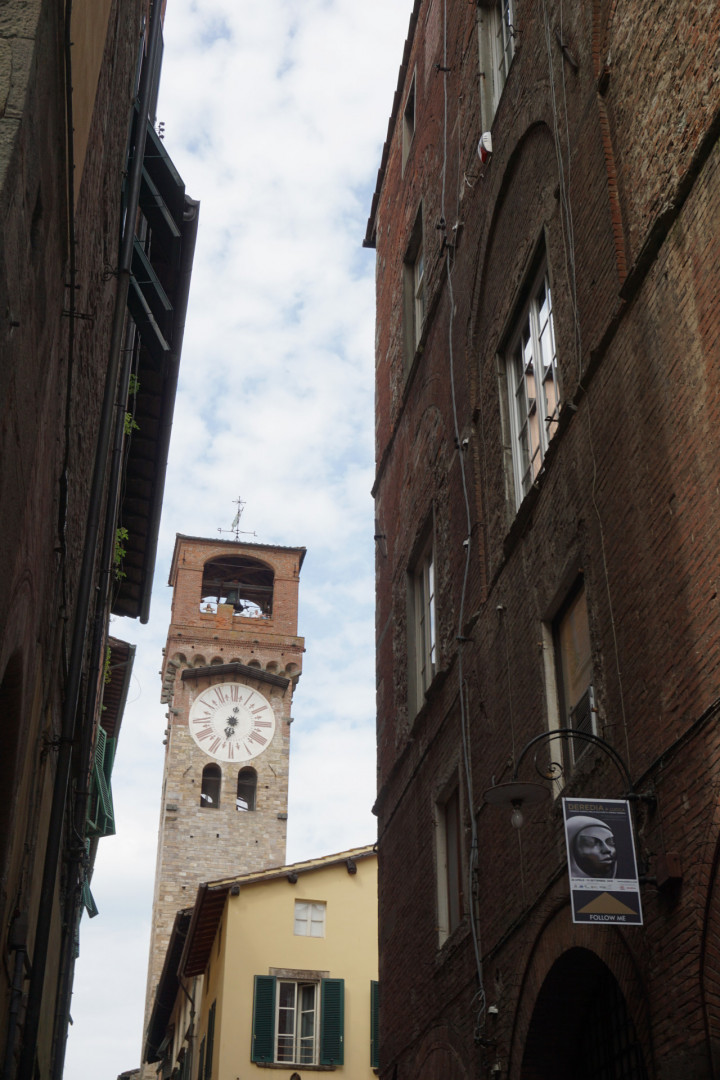
Torre Guinigi
This tower was named after the Guinigi family, a powerful family from 13th-century Lucca. You recognise it instantly because of the trees growing from the top of this 45-meter high tower.

Station
If you come by train from Florence or Pisa, you will arrive in the charming station dating back to 1846.
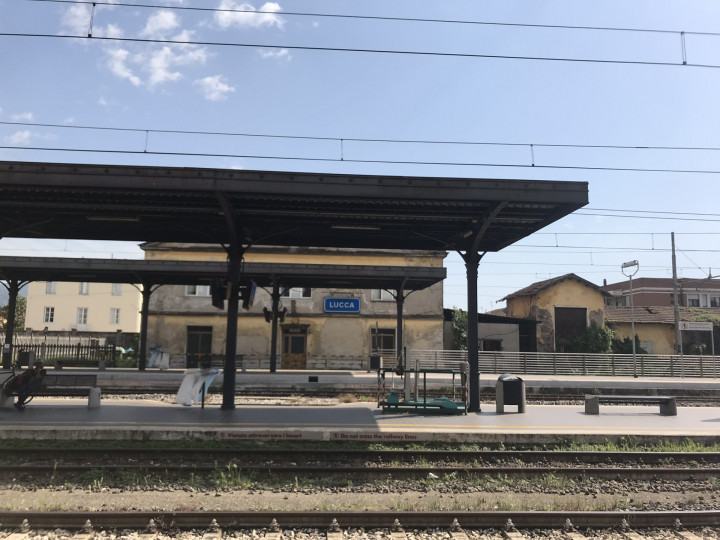
Aqueduct
The 19th-century Aqueduct of Nottolini is located near Lucca.
Legend says that Lucca was often threatened by floods of the Serchio. Frediano, the bishop of Lucca was appointed to resolve this issue. He went to the river, raked a path and ordered the river to follow that path in the future. Apparently, he was successful, as from that point on, the flow of the river changed and the city was out of danger.
However, a few hundred years of discussions about poor water supplies meant that an aqueduct was finally built at the start of the 19th century.
Puccini's birthplace
The world-famous composer Puccini was born here on 22 December 1858. His birthplace at the Corte San Lorenzo was completely restored in 2011. The white scarf he used to wear can still be seen here. The Piazza Cittadella has a statue of him
Lucca has another famous inhabitant: Mario Cipollini (cyclist)
Palazzo Pfanner
This 17th-century palace was built by the Moriconi family. In the centuries following, it was owned by a number of noble families and a wonderful garden was added in the 18th century. These days, the Pfanner family rules the palace.
Piazza Napoleone
This square was constructed in 1803 by Napoleon's sister while she ruled over Lucca. It's also Piazza Grande. Along the square lies the Ducal Palace, and there is a large statue of Napoleon.
Bar Lippi is also located on the square and serves wonderful pizzas.
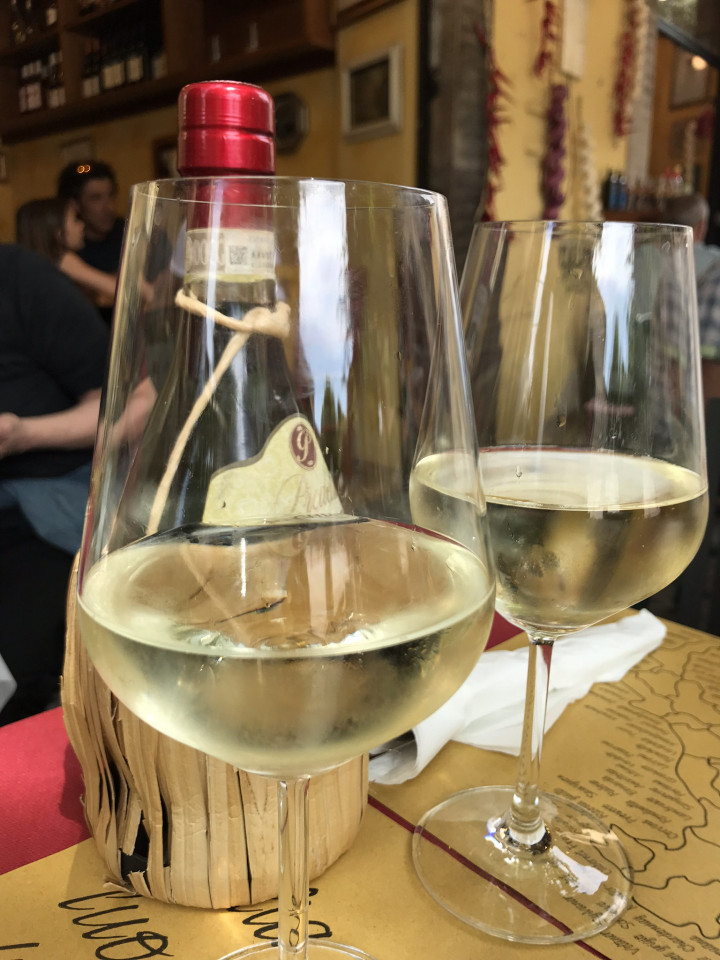
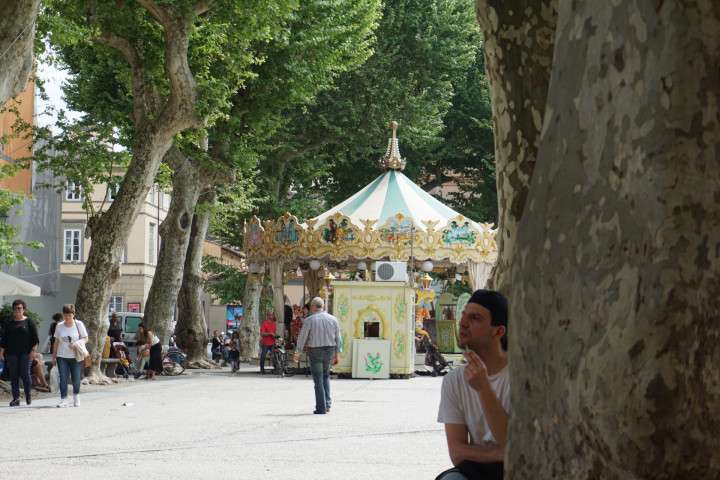
Cathedral/Duomo di San Martino
The cathedral, in white and grey marble, is one of the highlights of Lucca. The foundation stone was laid in 1063, and building works went on until 1241. The campanile (tower) was only added in the 13th century. An error in calculations meant that the cathedral is not symmetrical. The right arch is much smaller than the other two as there was not enough room. The cathedral top was meant to be added, but they never got that far.
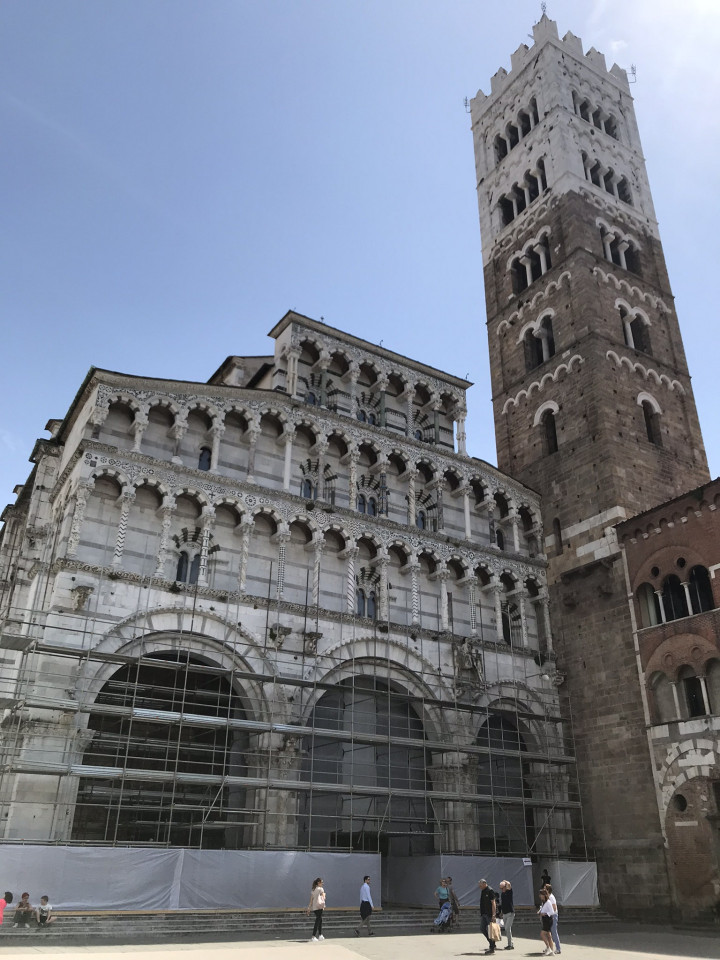
Piazza dell’anfiteatro
The most famous square in Lucca is also called the Piazza del Mercato. This oval square has the same shape as the Roman amphitheatre that was once built here. There is one arch left from Roman times, the others were all built later.
After the original amphitheatre was destroyed, this place once held a prison, a slaughter house and a warehouse. The current square was constructed in 1830. It is a wonderful area for browsing all the souvenir shops. There is also a large variety of terraces and restaurants.
f you’re in the area on 27th of April, be sure to visit Lucca, as they commemorate the death of the holy Santa Zita on this day.
Zita was a 13th-century maid who was always ready to help the poor. One day she was accused of theft, and she had to lift her skirt. It was hiding loaves of bread that changed into flowers.
On the 27th of April, they commemorate her and the whole square is full of flowers. A colourful spectacle.
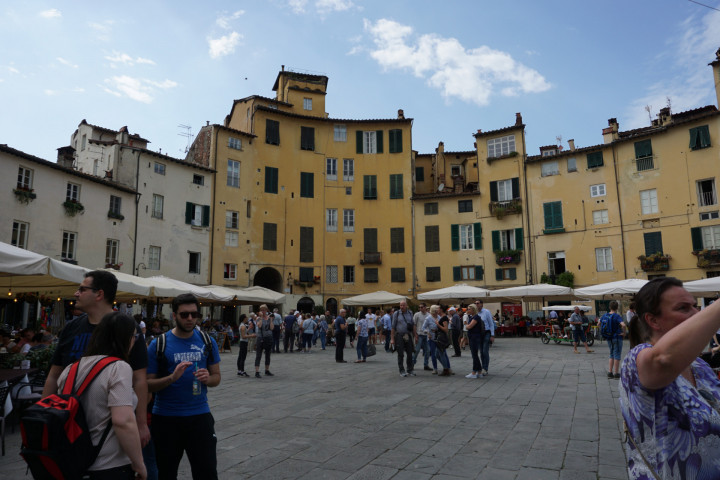
Basilica San Frediano
Santa Zita was buried in this wonderful basilica dating to the start of the 12th century. When Zita was exhumed in 1580, it appeared she had mummified. She now rests in a glass coffin.
Under the main altar lies San Frediano, an Irish bishop. He had a small church built here at the start of the 6th century.
The church’s interior is beautiful, and certainly worth a visit.
San Michele in Foro
This catholic church was first mentioned in 795, and was rebuilt a number of times. The current 13th-century façade is magnificent.

San Giusto
This 12th-century church is instantly recognisable because of the white stripes at the top.
In short, if you like pleasant cities, full to the brim with beautiful, historical buildings, then Lucca is the place to go. It is one of the highlights of Tuscany, and it is easy to plan as a day trip from Florence.
Do you know of any good sights in Tuscany? Share them in the comments below.
Like it? Pin it!
